Having a solid idea of what you want your website to do is the first step of planning.
Setting Goals
- Describe your products and services
- Build a loyal base of followers and customers
- Improve customer or technical support services
- Promote seasonal, monthly, or weekly advertisements
- Sell your products and services online
- Announce a service, product, or specialty for your business
- Tell your customers where your store is and when it’s open
- Reduce your one-time printing and mailing costs.
Content
Copywriting:
- Make titles clear and catchy – Distill the subject into a 3 – 7 word phrase for best results.
- Avoid wordy introductions – Get to the point quickly.
- Be clear and to the point – Brief sentences and paragraphs make reading easier.
- Use bullets and subtitles – Bullets and subtitles make ideas and points of interest stand out.
- Spelling & grammar must be correct – Always proofread your copy.
Imagery:
- File Formats – Should be .jpg, .png or .gif for the web.
- Resolution (dpi) – Images should be a minimum of 300 dpi at actual size.
- Image Size – Should be greater than 1000px wide by 800px high.
- Focus – Out-of-focus or ‘jittery’ images will be rejected.
- Image Quality – Framed, well-lit, and proper subject matter is essential.
- Stock Photography – Royalty-free, media-free rights must be procured.
Hosting & Domain
Domain: Your domain name is your internet address, the “www” and “dot com” that you see in everyone’s web address. Be sure the name of your business is in the name if possible. You also have the choice of using .com, .net, .org, .gov, etc. as the trailing identifier.
Hosting: The host server is a large computer with a directory that is assigned to you and only you. Your domain name is then “pointed” to this directory and that is how your website is broadcast on the internet.
SSL: If your hosting plan doesn’t include SSL, you will need to plan on purchasing an SSL certificate that encrypts your website from hackers and thieves.
Hosting with us: If you host with us, we include SSL and acces to our group of premium plugins along with automated backups and updates.
Branding
- Branding is all about how customers see your business, products, and services.
- Standardize all your printed materials and advertising.
- Products should reflect elements of your branding.
- What equity does your logo have for your business or organization?
- Does your “Tagline” describe your business accurately?
- Is your color palette consistent in your store, on your advertisements, and in the logo?
- Standardize the typeface or font you use in your print and advertising publications.
Call-To-Action
CTA stands for “call-to-action”, and it’s part of a webpage, advertisement, or piece of content that encourages the audience to do something.
Examples of CTAs:
- Sign up – for a free trial, an online course, a future event, or even a software product.
- Subscribe – receive updates from the company, a newsletter, or blog posts.
- Try for free – a free trial offer today to demo a product before purchasing.
- Get started – drive behaviors from a free trial to virtual reality experience.
- Learn more – provide a little more information so they’re prepared to buy something.
- Join us – for a free trial, an online course, a future event, or even a software product.
Promotion
Use both traditional & online media to promote your business.
- Blogging – Start one or write as a guest on a relevant blog.
- Social Media – Get a FaceBook, Pinterest, LinkedIn, and Twitter account.
- Press Releases – A news release about your website, business expansion, new products, etc.
- Newsletters – Put a ‘Join the List’ button on your site and start publishing a newsletter.
- Company signage – Your web address (URL) should be shown everywhere your logo is displayed.
- Business stationery – Get new business cards and letterhead/envelopes printed and distributed.
- Printed Advertisements – New website needs to be everywhere.
- Email Signatures – Place your logo and URL at the end of every email.
